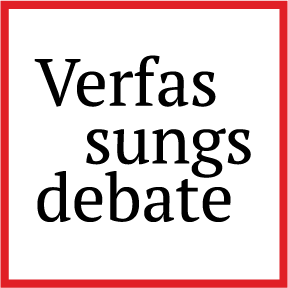The EU’s New Climate Targets and the Return of Flexibility
In the midst of high-profile climate litigation, one might overlook that something rather important did not happen: Over 90% of the parties failed to submit their revised climate targets ahead of the 30th COP taking place in Belém, Brazil, in November 2025. Faced with this collective disobedience, the Secretariat of the UN Framework Convention on Climate Change (UNFCCC) saw itself forced to extend the deadline for the parties’ new Nationally Determined Contributions (NDCs) to September. Among those who let the first deadline slide was the European Union, otherwise priding itself on leading the way in the struggle against climate change.
Early in July, the European Commission then released its proposal for a new climate target. The importance of this step for European and global climate politics can hardly be overstated. The Commission’s proposal affirms the EU’s flagship target of achieving “climate neutrality” by 2050 as well as the interim target of a 55% reduction of greenhouse gas emissions by 2030 when compared to 1990 levels. That much is old news. For 2040, the proposal now sets the new target of a 90% reduction, and therewith stays below what climate advocates had hoped for and what the Scientific Advisory Board on Climate Change had advised. Among the policy innovations, the use of international carbon credits to meet the EU’s climate targets stands out. Until now, the EU had defined its targets in terms of domestic emission reductions, not considering the possibility of any carbon offsets outside the Union. The envisaged use of carbon credits, albeit limited, is a main of expression of increased flexibility – the key idea that permeates the proposal.
More than anything else, the proposal oozes with emphasis on ensuring economic growth, global competitiveness and a level playing field, which, in many ways, is all too sensible. “We are being pragmatic and flexible … for economic, security and geopolitical reasons”, Wopke Hoekstra, Commissioner for Climate, Net-Zero and Clean Growth, explained during the press conference when the proposal for the new targets was released. “It’s about regaining competitiveness”, he added. As a common credo goes, the goal should be to decarbonize, not to deindustrialize (as though this were the only two options).
The Commission hails the new targets as “ambitious”. But the proposal clearly bows to concerns about geopolitical competition. “EU no longer willing to act alone on climate”, the Guardian thus titled. Greater flexibilities shall square the circle between climate ambition and competitiveness concerns. The idea has a telling history.
Flexibilities
The Commission’s proposal introduces three kinds of flexibility, of which the use of international credits is only one. The other two are the integration of domestic carbon removals into the EU Emission Trading Scheme and the possibility for EU Member States to overfulfill reduction targets in one sector of the economy to compensate for harder-to-abate emissions in others. Put differently, flexibility always points to the possibility of higher emissions “here” through some kind of compensation “there” – via international credits, domestic removals, or overfulfillment in another sector. To make sense of such flexibility and the debates around them, it helps to take a step back – for none of this is new.
Historically, the USA as well as Norway were among the main proponents of what, already in the 1990s, was called a “flexibility mechanism”. In the negotiations leading to the UNFCCC, concluded at the Rio Earth Summit in 1992, the USA as well as Norway pushed for articulating any reduction targets in terms of industry wide net measurements: policies and measures shall be “comprehensive, cover all relevant sources, sinks and reservoirs of greenhouse gases … and comprise all economic sectors”, the UNFCCC came to read. And policies and measures “may be carried out cooperatively”. On another occasion, the convention recognizes that parties may implement policies and measures jointly with other Parties. Joint implementation was the appealing term for crediting emission reductions elsewhere toward one’s own targets – it always had the taste of trickery.
For Norway, the prospect of extracting oil discovered in the Norwegian Sea played a key role at the time. With support from the World Bank, Norway initiated a pilot project for electricity generation from biomass in the Democratic Republic of Congo, and in a way that remains exemplary, it argued that scarce financial resources should be used where they can yield the greatest benefit or, conversely, where the marginal costs of additional reductions are lowest. Norway’s arguments in favour of cost-effective emission reductions thus coincided perfectly with its interest in developing new oil fields. Unsurprisingly, the fossil fuel lobby has always been one of the strongest advocates for emission trading, helped along by the overpowering appeal of economic rationality – a point to which I shall return.
Following this logic, the flexibility of the EU climate targets as now proposed by the Commission might not go far enough. The proposal is arguably still too guarded. The possibility of compensating emissions through carbon dioxide removal (CDR) is, according to the Commission’s proposal, limited to residual emissions in hard-to-abate sectors. Some argue that this restriction “lacks economic justification” considering that “allowing CDR credits to offset emissions from any sources enables market forces to identify the most cost-efficient compliance pathways across the entire economy”. By the same token, the limitation of using international credits only after 2036 and for up to 3% of the emissions may seem “awfully little … unlikely to make a difference for an industrial EU that is facing an existential crisis”. It is, however, a rather generous limitation – the 3% are measured against baseline emissions of 1990, which amounts to almost to 20% of current emissions. Be that as it may, any such limitation would appear to lack an economic justification – let reductions happen where they are most cost-efficient, period.
Critique: Integrity and Ambition
Criticism of carbon offsets is as old as the idea itself. The empirical evidence of the interim practice is moreover rather devastating – quite likely, carbon credits have done more harm than good. Several NGOs summarized the reasons against integrating international credits into the EU’s 2040 climate target and NDC in an open letter. Their points stick.
First of all: Are credited reductions real or inflated? According to a recent systematic assessment in Nature Communications, also quoted in the NGOs’ open letter, less than 16% of carbon credits constitute real emission reductions (with considerable variation across project types, however). Commissioner Hoekstra now insists that credits will be of “high quality” and that they “will have to be verifiable, certifiable and additional”. But that is easier said than done. Over the last years, carbon markets have repeatedly collapsed due to a lack of demand and because the commodity (carbon credits) simply turned out to be junk. Accounts of botched or even bogus emissions reduction projects have made headlines.
The Paris Agreement tries once more to rectify those concerns by aiming to assure the integrity of carbon credits, and the EU could push standards further in that direction. And yet it remains questionable that it will work. Two kinds of crediting schemes need to be distinguished here. On the one hand, the Paris Agreement encourages the cooperation between countries. In December 2023, Switzerland was the first country to count an Internationally Transferred Mitigation Outcome (ITMO) toward its balance on the basis of Article 6 paragraph 2 of the Paris Agreement. It did so by financing electric buses in Bangkok. But the switch to electric buses would reportedly have happened anyway – the emission reductions were thus hardly additional.
On the other hand, there are credits generated on the basis of Article 6 paragraph 4 under international supervision. One of the problems has always been the unruly number of assessment standards and the assurance of quality, which contributes to explaining the devastating finding that only 16% of credited reductions are “real”. Negotiators have made some interesting improvements in that regard, including a liability scheme that includes an assessment of the risk of carbon reductions potentially turning out to fail. Project developers would need to add additional credits to a kind of safety pool.
But even if – a big if – the quality of international credits could be ensured in a way that has not been possible in the past, other points of criticism persist. Ever since Norway’s pilot project of joint implementation, it has been argued that offsetting emissions implicitly enables other climate-damaging projects – in Norway’s example as in others: oil production. As a matter of fact, emission trading does enable Saudi Arabia to reaffirm its goal of climate neutrality by 2060 and, without even blinking, to simultaneously plan for expanding its oil and gas production – its claim may not be credible, but it is discursively possible.
The Commission fuels the charge of delaying or distracting from reductions by reformulating its target, which used to be expressed in domestic emissions, to now include international credits. If international credits are to be considered, then they should lead to increased ambitions. They should supplement, not substitute, any domestic reduction target. That is how the Paris Agreement speaks about international credits – that they “allow for higher ambition”. But that language remains aspirational, and it is contradicted in practice, now once more by the EU Commission’s proposal.
Dogma or Principle?
The main point of contention, however, has been the critical question of who wins and who loses. In the leadup to the Kyoto Protocol (1997), a representative of an African state responded to the renewed elaboration on the benefits of cost-efficient emissions reductions, this time from the US, with the poignant question: “Why should African governments let their land be used as a toilet for absorbing emissions from Americans’ second cars?”
Notably, the EU then stood firmly on the side of the critics of flexibility. It read arguments in favour of carbon offsetting and emission trading above all as a ruse by the US in an effort to weaken or sidestep reduction commitments. The EU itself even likened carbon credits to trade in indulgences. It made a U-turn soon after that.
The Kyoto Protocol, it bears retelling, not only set binding emission reduction targets for developed countries, but it also provided for different kinds of flexibility, including international carbon offsets administered through the so-called Clean Development Mechanism (CDM). That the CDM was set up was a big surprise in the final hours of the night-time negotiations in Kyoto. What happened there remains crucial.
Apart from the EU, especially countries of the Global South had strongly and vocally resisted international carbon offsets. They generally argued as follows: The industrialized countries of the Global North bear the main responsibility for global warming due to their past and present share of greenhouse gas emissions. Their unsustainable economic and lifestyle practices needed to change. A compensation mechanism through which industrialized countries could offset their emissions by reductions in developing countries would lead to a constellation in which industrialized countries were able to buy the “right” to continue and perhaps even increase their greenhouse gas emissions. Norway’s keen advocacy of offsetting in favour of oil extraction in the North Sea once more serves as a case in point.
Moreover, developing countries insisted on the need for continued development financing to counter poverty and support sustainable development. Any financing for voluntary climate measures on their part should be additional to that ordinary development assistance. As Sarah Riley Case has shown, this is in fact how the vocabulary of additionality entered the discourse: climate financing in addition to ordinary development assistance.
In the leadup to Kyoto, a Clean Development Fund was thus thought up to pool and distribute financial resources for climate measures. In an exemplary fashion, Tanzanian negotiator Bakari Mbonde emphasized on behalf of the group of developing countries (the G77) that this shall be the function of the Fund: to provide additional climate finance for voluntary measures. His support for the Fund went hand in hand with his strong rejection of any kind of “extraterritorial” implementation of industrialized countries’ reduction targets in developing countries, of a compensation mechanism, that is, in the form of international carbon offsetting. How then did a compensation mechanism still come to pass?
In order to replenish the Fund, the Brazilian delegation proposed penalty payments: industrialized countries that failed to meet their reduction targets should pay into the Fund—the figure of USD 10 per tCO2e made the rounds. The idea was thus a straightforward sanctioning mechanism that would hold industrialized countries to their commitments and, if commitments were not met, those payments would replenish the Fund to the benefit of developing countries. This is how the idea was discussed until the penultimate day of negotiations in Kyoto.
The Brazilian proposal of a sanctioning mechanism, however, offered the US an unexpected opportunity to push through the idea of a compensation mechanism after all: If sanction payments from industrialized countries via the Fund led to reduction projects in developing countries, the US argued, then this would be economically equivalent to a compensation mechanism according to which industrialized countries’ financed reduction projects and counted those reductions to their countries benefit. What was thought of in opposition – sanctions versus compensation – reappeared as one and the same. From an economic point of view, their equivalence indeed seemed undeniable.
When the proposed text for the Clean Development Mechanism was presented to the delegates in Kyoto at 7 a.m., the night’s deal remained sealed, and to everyone’s great surprise, the CDM’s compensation mechanism made it into the Kyoto Protocol.
Flexibility and Asymmetry
On closer inspection, however, the ideas for a fund, financed through sanction payments, and a mechanism that enabled industrialized countries to meet their commitments by financing reductions in developed countries, were worlds apart, symbolically and what concerns underlying power relations.
Let it not be forgotten that the aim for greater flexibility for industrialized countries has been the single main driver of the CDM and any kind of international offset mechanism since then. While the CDM grew out of the idea of a fund for climate finance, international carbon offsetting is not a form of financing at all, but a transaction that generates an international carbon credit.
Today, it is remarkable that the argumentative patterns about offsetting have hardly changed when compared to the debates in the 1990s. Commissioner Hoekstra now explains the incorporation of carbon credits into European climate targets with familiar references to efficiency and cooperation. Concerns are cast aside as narrow-minded dogmatism: “It’s important to be non-dogmatic,” Hoekstra thus proclaims, adding that “we are being pragmatic and flexible”.
Criticisms against international carbon offsets are just as predictable: not only do carbon credits amount to window dressing and distract from the goal of domestic European emissions reductions, they also fail to do justice to Europe’s own responsibility. They rather undercut principles of climate justice and allocations of fair shares. In response to the Commission’s proposal, Mohamed Adow, director of the Nairobi-based think tank Power Shift Africa summarized this point of critique thus:
The EU using carbon credits in its 2040 target is a huge concern and will undermine trust at a time [when] we need Europe to be stepping into the void left by the US. Carbon credits are a mirage, an accounting trick to let the rich world keep on burning fossil fuels whilst pretending that climate change is being tackled somewhere else in the world.
Importantly, the twist in Kyoto from a fund to a mechanism allows to pass off as cooperative what is really an asymmetric transaction favouring rich countries’ possibility to pollute. They enlarge their “fair” share through their financial prowess.
The reference to carbon credits in the new European climate target once again fuels concerns about entrenched asymmetries about who gains and who loses. EU Commissioner Hoekstra wants to use emissions offsetting to “help build bridges with our friends around the world.” But this forced metaphor cannot disguise the fact that Europe is thereby relaxing its own responsibility. Above all, it is granting European industry, as Hoekstra puts it, “more breathing space.”



